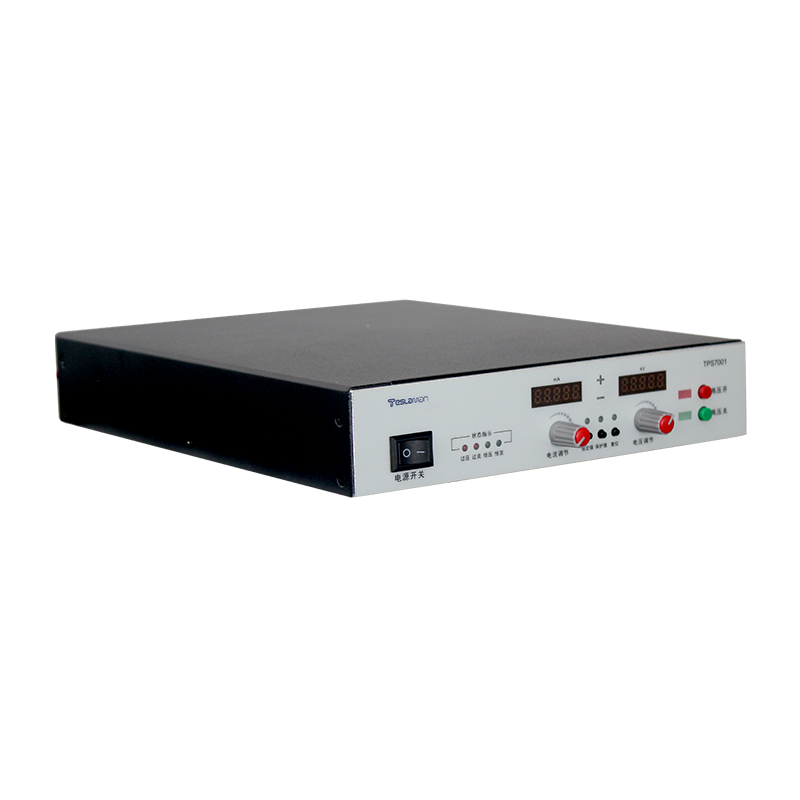High-voltage power supply in non-destructive testing applications
Non-destructive testing technology as an important means of detection, widely used in aviation, aerospace, petroleum, chemical, metallurgical, electric power, construction and other fields, for ensuring product quality and safety is of great significance. And high-voltage power supply as a core component of non-destructive testing equipment, its performance directly affects the accuracy and reliability of the test results. This article will introduce the application of high-voltage power supply in non-destructive testing from a professional perspective.
I. Overview of non-destructive testing
Non-destructive testing refers to the detection of defects and anomalies on the surface or inside the object under inspection without destroying the object. The main purpose of non-destructive testing is to detect defects in products in a timely manner, avoid unqualified products from entering the market, and ensure the safety of people's lives and property.
II. Role of high-voltage power supply in non-destructive testing
High-voltage power supply plays the following roles in non-destructive testing:
1. Provide high voltage: Non-destructive testing equipment usually requires a high voltage to excite the defect signal of the object under inspection. For example, industrial X-ray testing requires a high voltage of several tens of kilovolts to generate enough X-ray penetration to detect internal defects of the object under inspection.
2. Provide large current: In some non-destructive testing methods, a large current is needed to excite the defect signal. For example, eddy current testing requires high-frequency alternating current to be passed into the object under inspection, and the change in the induced current is detected to determine the presence and nature of the defect.
3. Control the waveform and frequency of voltage and current: In order to adapt to different testing methods and objects under inspection, high-voltage power supplies need to be able to accurately control the output voltage and current waveform and frequency. For example, in ultrasonic testing, a pulse voltage and current are used to excite the ultrasonic signal.
III. Application of high-voltage power supply in non-destructive testing
1. Industrial X-ray testing: Industrial X-ray testing is a commonly used non-destructive testing method, mainly used to detect internal defects of metal materials. In industrial X-ray testing, the high-voltage power supply is an important equipment for generating X-rays. By applying the high voltage output by the high-voltage power supply to the X-ray tube, high-energy electron beams are generated, which collide with the target material to generate X-rays. After passing through the object under inspection, the X-rays are received by the detector and converted into electrical signals. After processing and analysis, the internal defects of the object under inspection can be judged.
2. Eddy current testing: Eddy current testing is a non-destructive testing method based on the principle of electromagnetic induction, mainly used to detect surface defects of conductive materials. In eddy current testing, the high-voltage power supply is an important equipment for generating high-frequency alternating current. By applying the high-frequency alternating current output by the high-voltage power supply to the object under inspection, an eddy current is generated at the defect site, causing changes in the electromagnetic field. The detector detects these changes and, after processing and analysis, can determine the surface defects of the object under inspection.
3. Ultrasonic testing: Ultrasonic testing is a non-destructive testing method based on the principle of sound wave propagation, mainly used to detect internal defects of metal materials. In ultrasonic testing, the high-voltage power supply is an important equipment for generating pulse voltage and current. By applying the pulse voltage and current output by the high-voltage power supply to the transducer, an ultrasonic pulse is generated. During the propagation of the ultrasonic pulse in the object under inspection, if it encounters a defect, it will be reflected back to the transducer, which is received by the transducer and converted into an electrical signal. After processing and analysis, the internal defects of the object under inspection can be judged.
IV. Development trend of high-voltage power supply in non-destructive testing
With the continuous advancement of technology and the development of industrial production, the demand for non-destructive testing technology is increasing, and the performance and stability of high-voltage power supplies are also putting forward higher requirements. In the future, the development trend of high-voltage power supply in non-destructive testing will mainly include:
1. Digitalization and intelligence of high-voltage power supply: With the development of digital technology and artificial intelligence technology, the future high-voltage power supply will realize digitalization and intelligence, which can automatically adjust the waveform and frequency of output voltage and current, adapt to different testing methods and objects under inspection. At the same time, the high-voltage power supply will have remote control and fault diagnosis functions, improving the convenience and safety of the testing equipment.
2. Miniaturization and lightweight of high-voltage power supply: With the increasing demand for portable testing equipment, the future high-voltage power supply will achieve miniaturization and lightweight, which can be easily integrated into portable testing equipment, improving the portability and efficiency of testing equipment.
3. High efficiency and environmental protection of high-voltage power supply: With the increasing awareness of environmental protection, the future high-voltage power supply will pay more attention to efficiency and environmental protection. By using new materials and manufacturing processes, the conversion efficiency of high-voltage power supply can be improved, and energy consumption and temperature rise can be reduced. At the same time, the use and emission of harmful substances will be reduced, improving the environmental performance of high-voltage power supply.
In short, the high-voltage power supply plays a crucial role in non-destructive testing, and its performance and stability directly affect the accuracy and reliability of the test results. With the development of technology and the needs of industrial production, the high-voltage power supply will continue to develop and innovate, providing more reliable and efficient power support for the development of non-destructive testing technology.




















